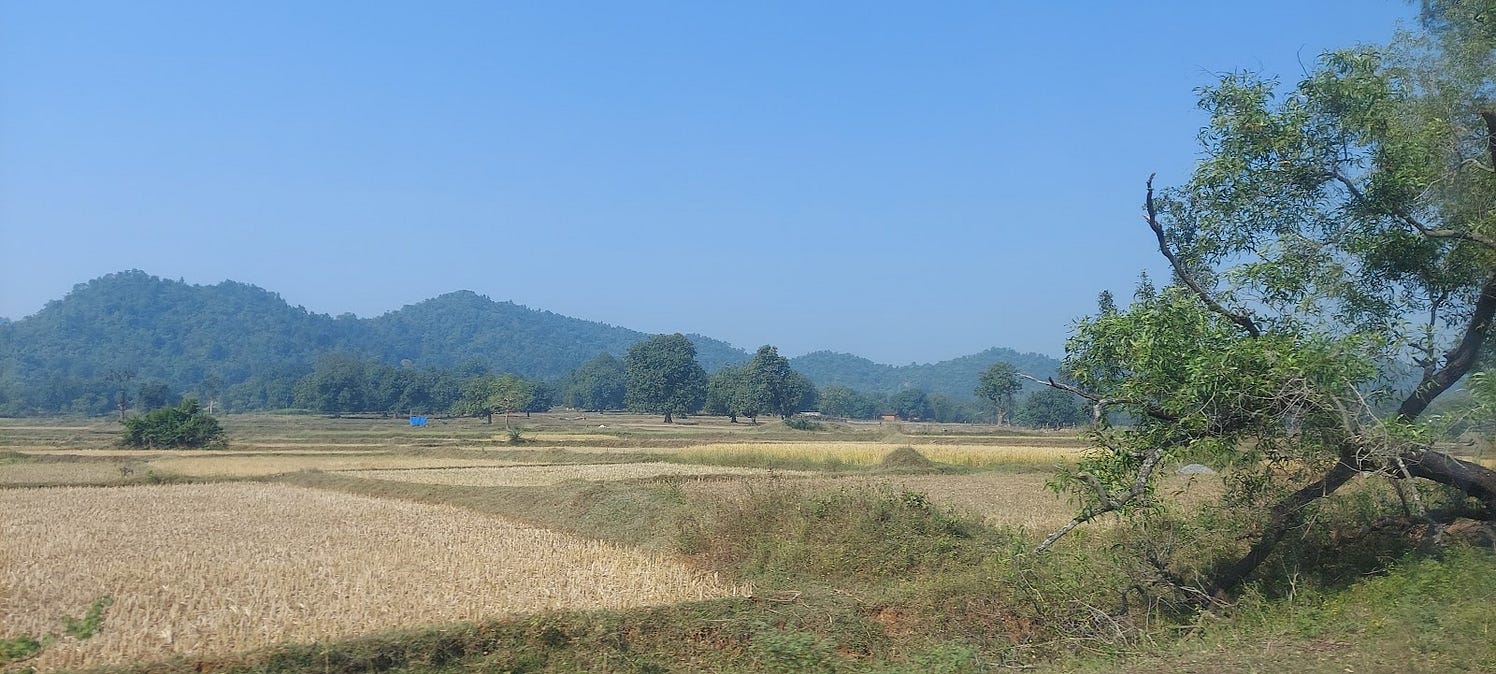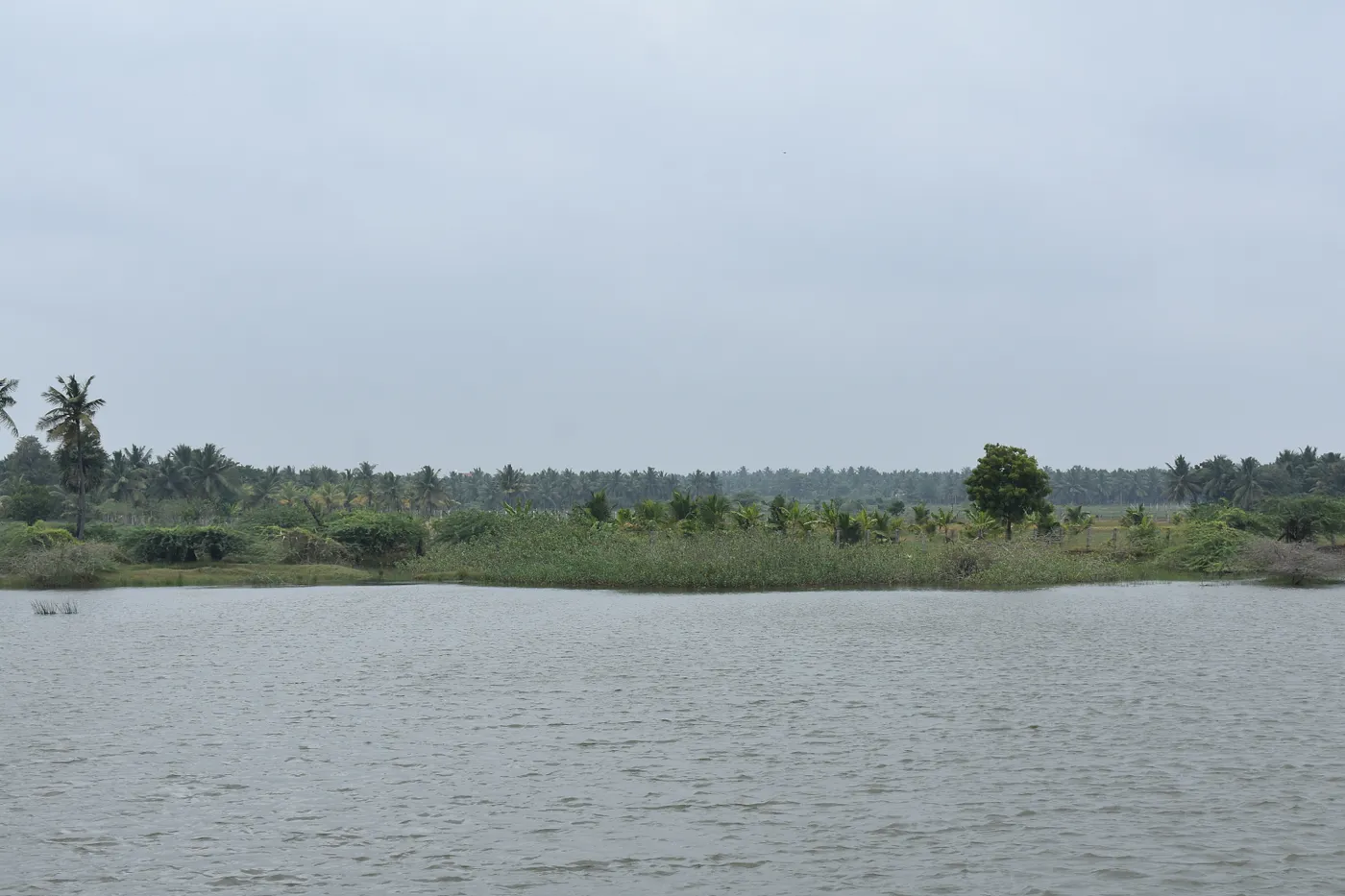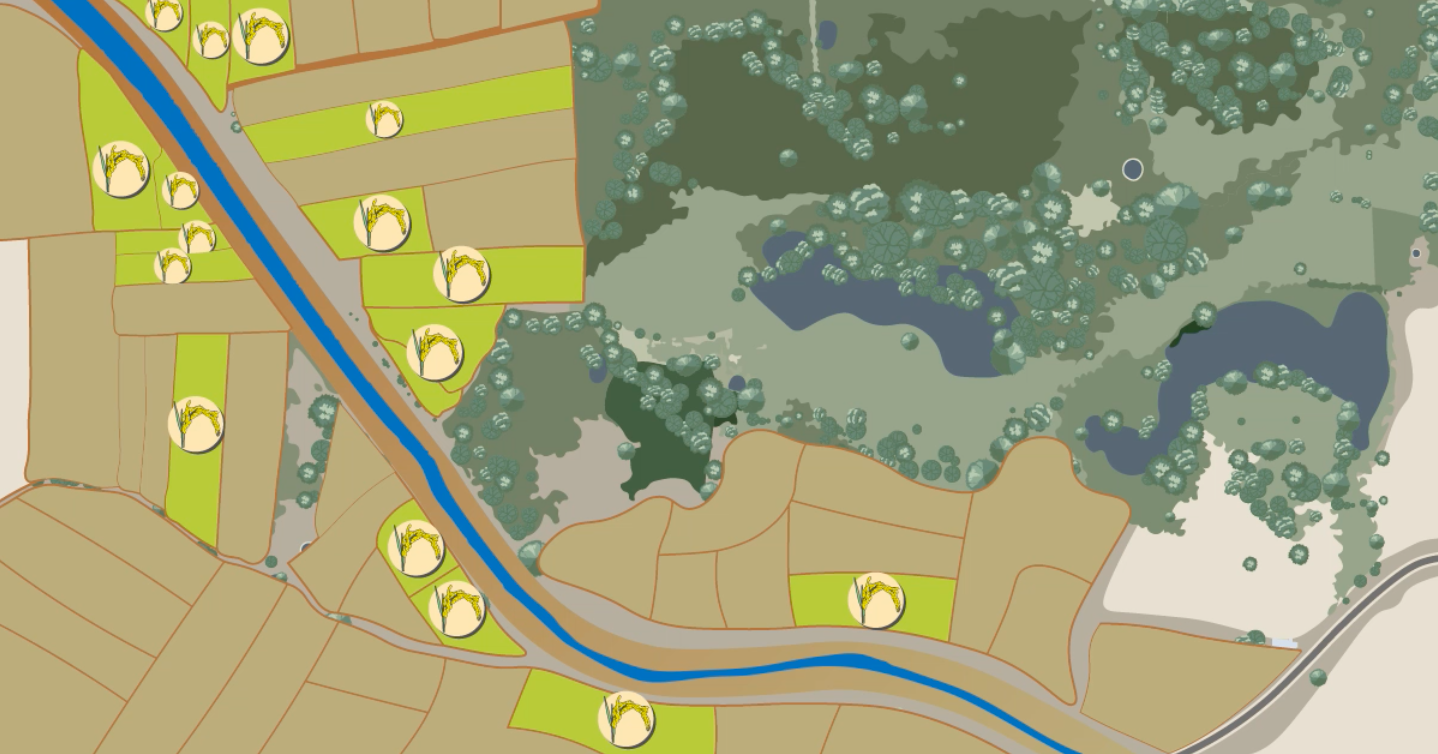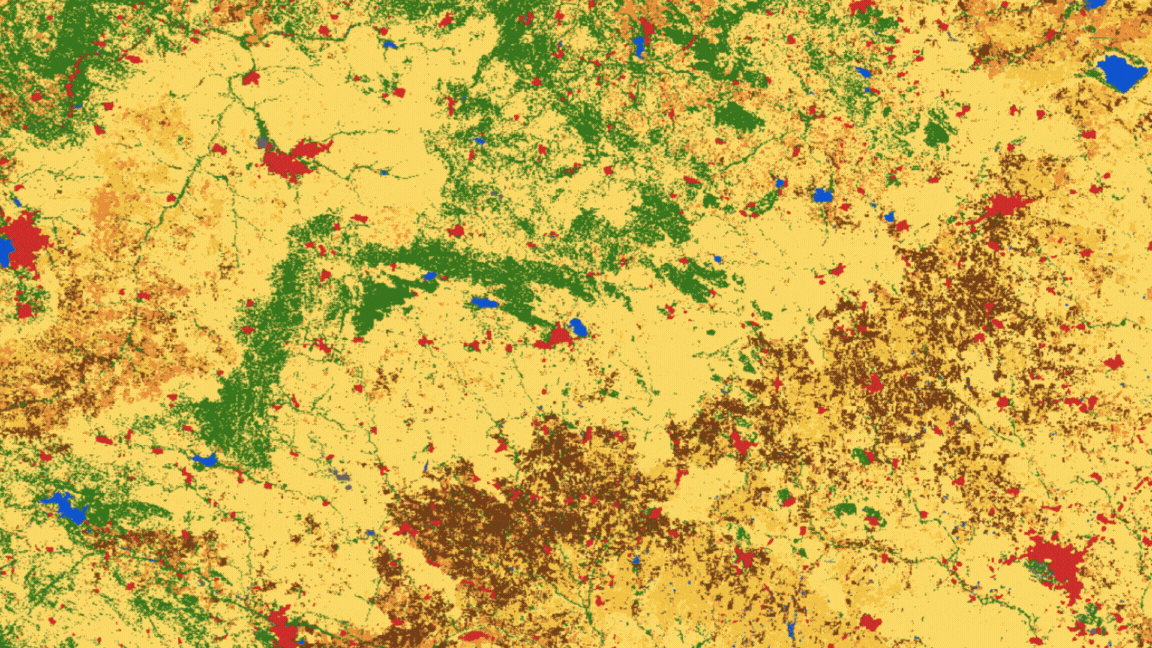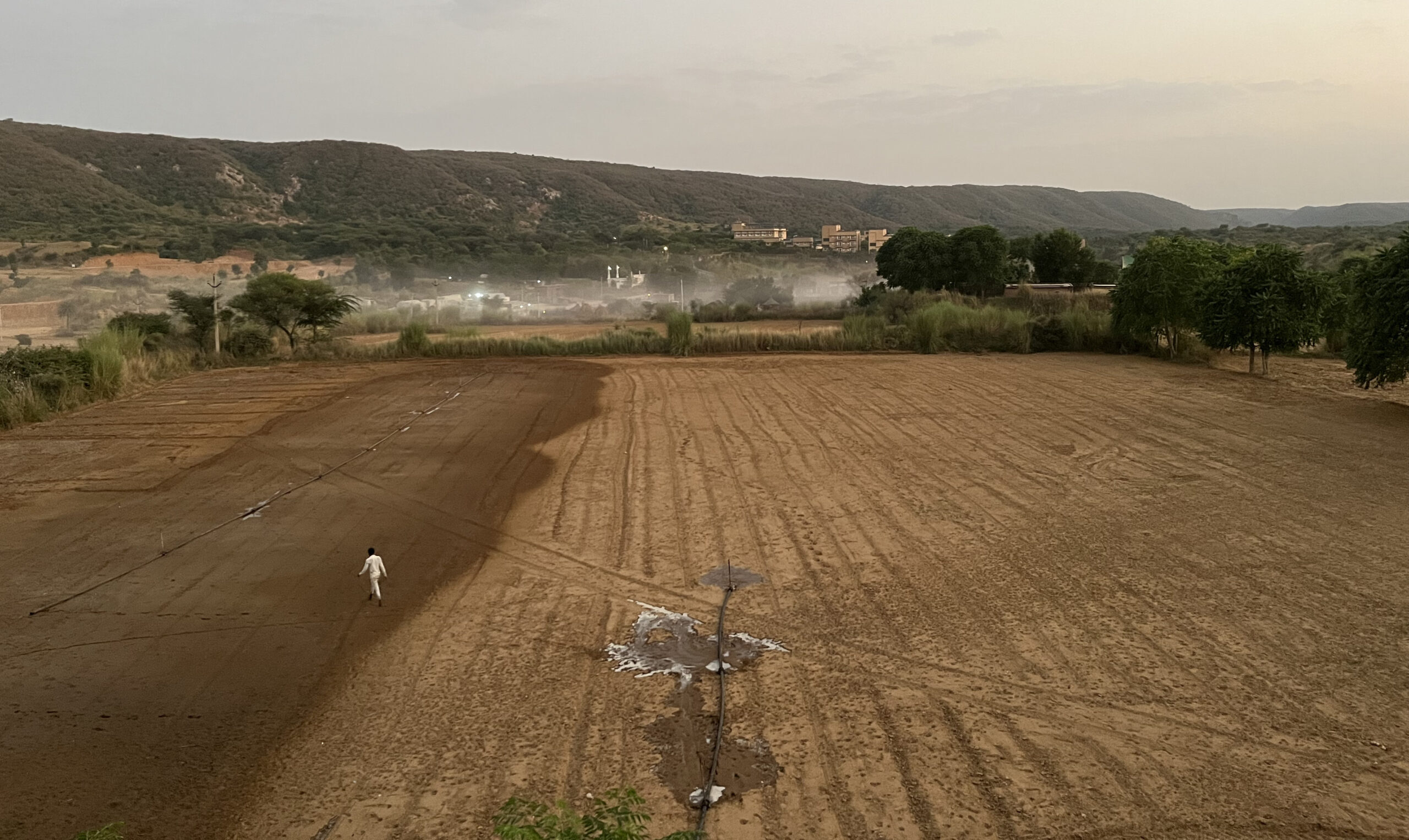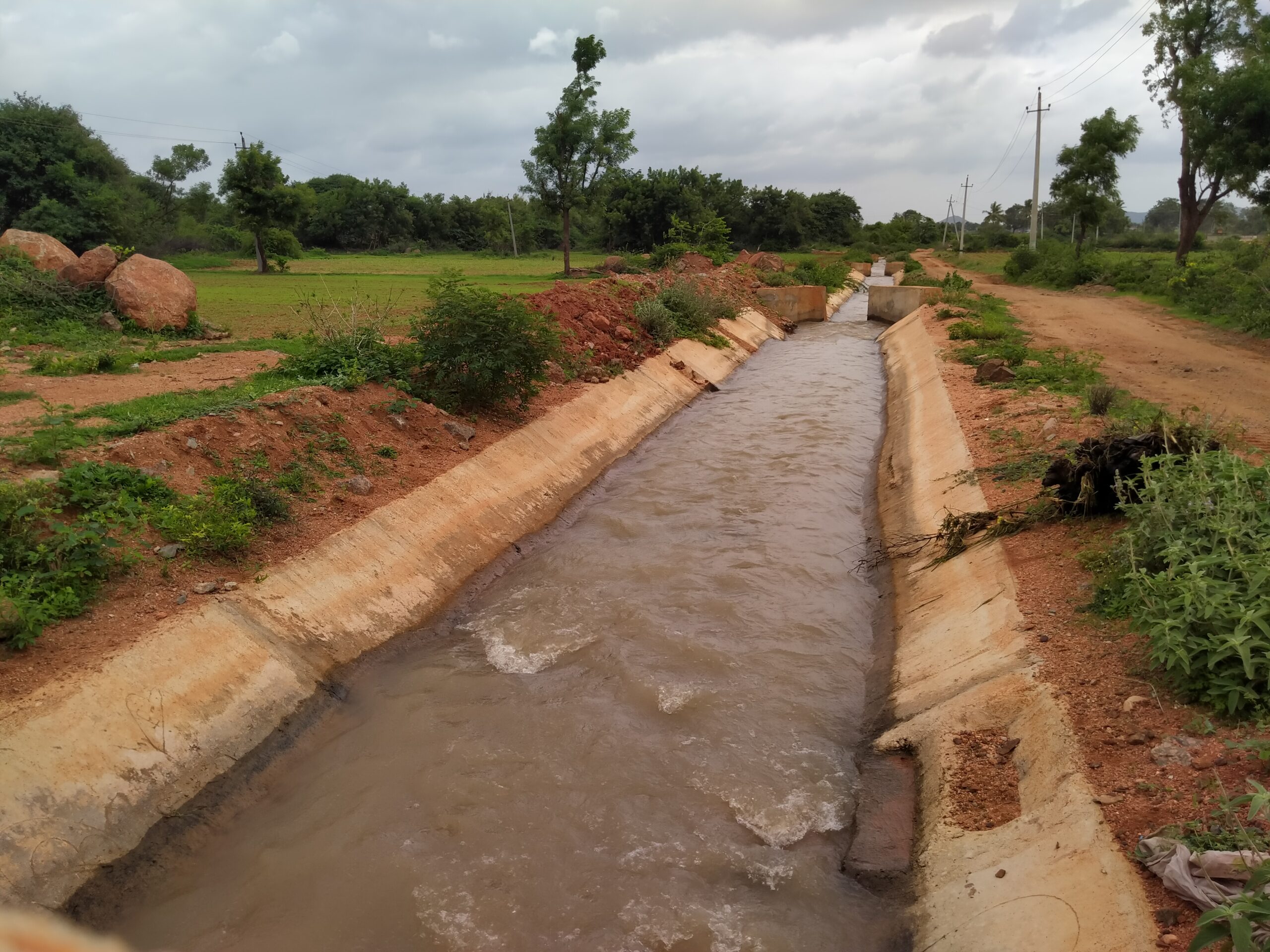Measuring What Matters: Communities Assessing Water Solutions
Staff from a local non-governmental organisation in Theni, Tamil Nadu installs a pressure transducer into a Pani Pipe to monitor water levels in a paddy field. Photo credit: Anas KP
Water-saving solutions behave differently across India, depending on a region’s hydrogeology and land use patterns. An intervention that is successful in one landscape may be a failure in another. By nature, water is dynamic, and with the added variability of climate change, difficult to predict. As our scientific understanding evolves, both of water and solutions to conserve it, there is a need to continuously monitor the impact of these solutions on both farmers and water.
In most cases, the water sector relies on short-term monitoring and evaluation (M&E) assessments that measure inputs and outputs, rather than long-term outcomes. This can lead to gaps in our long-term understanding of water sustainability and equity.
For example, in discussions with four experienced civil society organisations (CSOs) in India, we found that donors required them to report on the number of outputs, such as rainwater harvesting units constructed or number of farmers trained on a water-saving production technique. Water levels, soil moisture, and other indicators of water conservation were not measured during the projects.
In such a scenario, it would be difficult to confirm whether the units constructed or farmers trained led to any impactful change in critical outcomes related to groundwater levels, recharge potential, agricultural yields, or total irrigation applied. Both secondary data and farmer recall data is not sufficient to understand variable environmental impacts.
To solve this issue, the hydrology team working on the project (Ishita Jalan, Lakshmikantha NR, Clinton Fernandes, Anas KP, Vivek Grewal, and Gopal Penny) has developed a protocol for field-based, community-led continuous monitoring.
Community-led continuous monitoring can help the different stakeholders—water users, government agencies, donors, CSOs, scientists—understand the real-time impact of an intervention while also isolating any other potential causes for increase or decrease in water availability.
Read more: How Can We Measure Water Security Accurately?
WELL Labs, in partnership with Environmental Defense Fund (EDF) and various civil society organisations across India, is testing out a range of tools that can support community-led continuous monitoring of interventions such as drip irrigation systems, borewell recharge structures, rainwater harvesting, and agroforestry. The aim is to ensure that communities are self-reliant when it comes to assessing problems and finding solutions.
Types of watershed solutions*
| Supply | Demand | Soil conservation |
| – Check dams – Earthen dams – Rainwater harvesting – Groundwater recharge – Water quality improvement – Desilting of tanks |
– Micro-irrigation – Water-saving paddy techniques such as – Alternate Wetting and Drying (AWD) – Wastewater reuse – Adoption of drought-resistant seed varieties – Crop diversification |
– Construction of trenches, gully plugs – Tree plantations – Agroforestry – Conservation tillage – Mulching – Cover cropping |
*Not exhaustive
How Was Data Collected?
Community science, where local communities participate in scientific research to address their specific needs and priorities, is an effective way to ensure local ownership of water solutions and their impact. For example, a CSO can use a flow meter to analyse whether a precision irrigation practice has truly reduced total irrigation applied. Or a farmer can install a soil moisture sensor on their plot to observe the long-term improvements in water retention from bunding, mulching, or no-till agriculture. When combined with agricultural yield data, there is a potential to show visible results to the farmer on the correlation between soil moisture and improved yields, to improve the long-term uptake of a practice that a farmer may otherwise be hesitant to adopt. By owning the data and analysis, for example on groundwater levels, farmers and CSOs will have a way to demand attention from governing bodies as well to address critical problems.
These tools and tests—like a pressure transducer, soil moisture sensor, rain gauge, staff gauge, flow meter, and well inventory—can be used differently depending on the outcome desired for the intervention. The table below lists examples of interventions and tool/tests that can help with continuous monitoring.
| What is being monitored | Appropriate tool or test for monitoring | Ideal frequency to monitor | Why it is being monitored and/or relevant interventions |
| Groundwater level | Pressure transducer | 15 minutes | – Borewell recharge structures |
| Surface water level | Staff gauge | Daily | – Farm ponds |
| Soil moisture | Soil moisture sensor | 15 minutes at one location. Daily readings across multiple plots. |
– Natural farming techniques (e.g. mulching) – Drip irrigation – Water-saving rice techniques (e.g. direct-seeded rice, and alternate wetting and drying)
|
| Frequency of rainfall | Rain gauge | Hourly |
This supports isolating the impact of rainfall on an intervention when estimating total water savings.
|
| No. of irrigations and total water applied on farms | Flow meter | Weekly |
This can be used on surface water interventions to monitor any potential reduction in use of groundwater by farmers. Interventions include: – Drip irrigation – Water-saving agricultural practices (e.g. direct-seeded rice, and alternate wetting and drying) |
| Mapping the recharge and discharge areas for groundwater in the landscape | Well inventory | Each season | This helps plan any intervention |
How to do Community-led Continuous Monitoring of Water
We are currently piloting community-led continuous water monitoring in four states across India—Gujarat, Uttar Pradesh, Tamil Nadu and Telangana. In each site, we follow a process to conduct the continuous monitoring exercise with local communities and CSOs.
Step 1: Decide the ideal location for a monitoring tool
The first step is to determine the placement of the tool based on the requirements of the programme or intervention. It is essential to consult the local community and CSOs from the start as they are the ones who will eventually take responsibility for maintaining the tool. For example, the WELL Labs team recently needed to measure the impact of constructed farm ponds in a village near Toopran, Telangana, to assess how much of that water recharges the aquifer, evaporates, is collected through the year, and is used for protective irrigation. We worked with the community to understand the ideal and scientific location for the tool—a staff gauge in this case.
Read more: Staff Gauge, A Guide to Measuring Aquifer Recharge Through the Water Balance Method
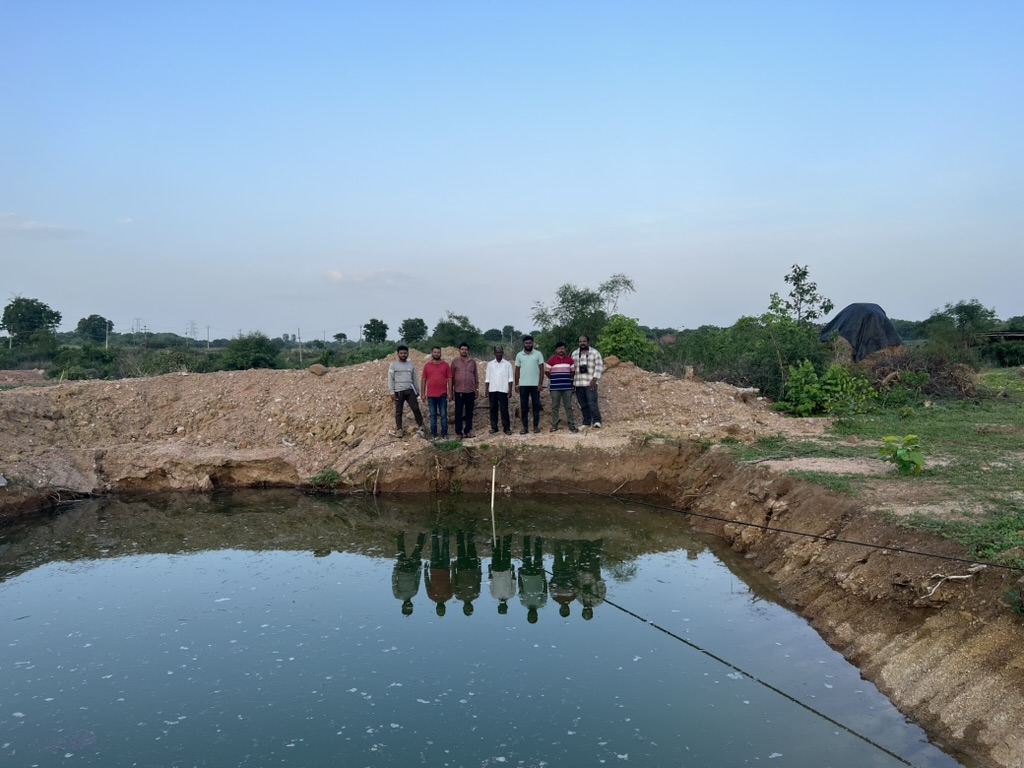
The team installed a staff gauge in a farm pond in Toopran, Telangana to measure water levels over time. Photo credit: Vanya Mehta
.
Step 2: Construct the appropriate implements and install the tool with community
Next, one must install the tool and construct the relevant implements required for installation. Some tools can be installed directly at the site, while others, such as the borewell transducer pipe depicted below, must be customised.
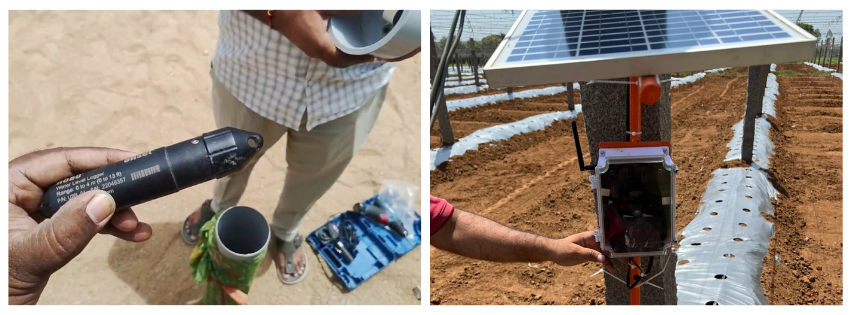
The team installed a pressure transducer (left) and a soil moisture sensor (right) in Toopran, Telangana, to monitor the impact of a borewell recharge structure and land conservation technique, respectively. Photo credit: Lakshmikantha NR and Vanya Mehta
.
Step 3: Train the community to collect regular data
While scientists play a role in understanding and analysing the data, it is essential to entrust regular data collection to the local communities and CSOs. Community resource persons (CRPs) and field coordinators should be trained to input the data through mobile applications like mWater and SmartU, to ensure that remote teams can collaborate and verify the readings. In addition, communities need training to interpret the data, so that they can see for themselves whether the interventions are creating an impact.
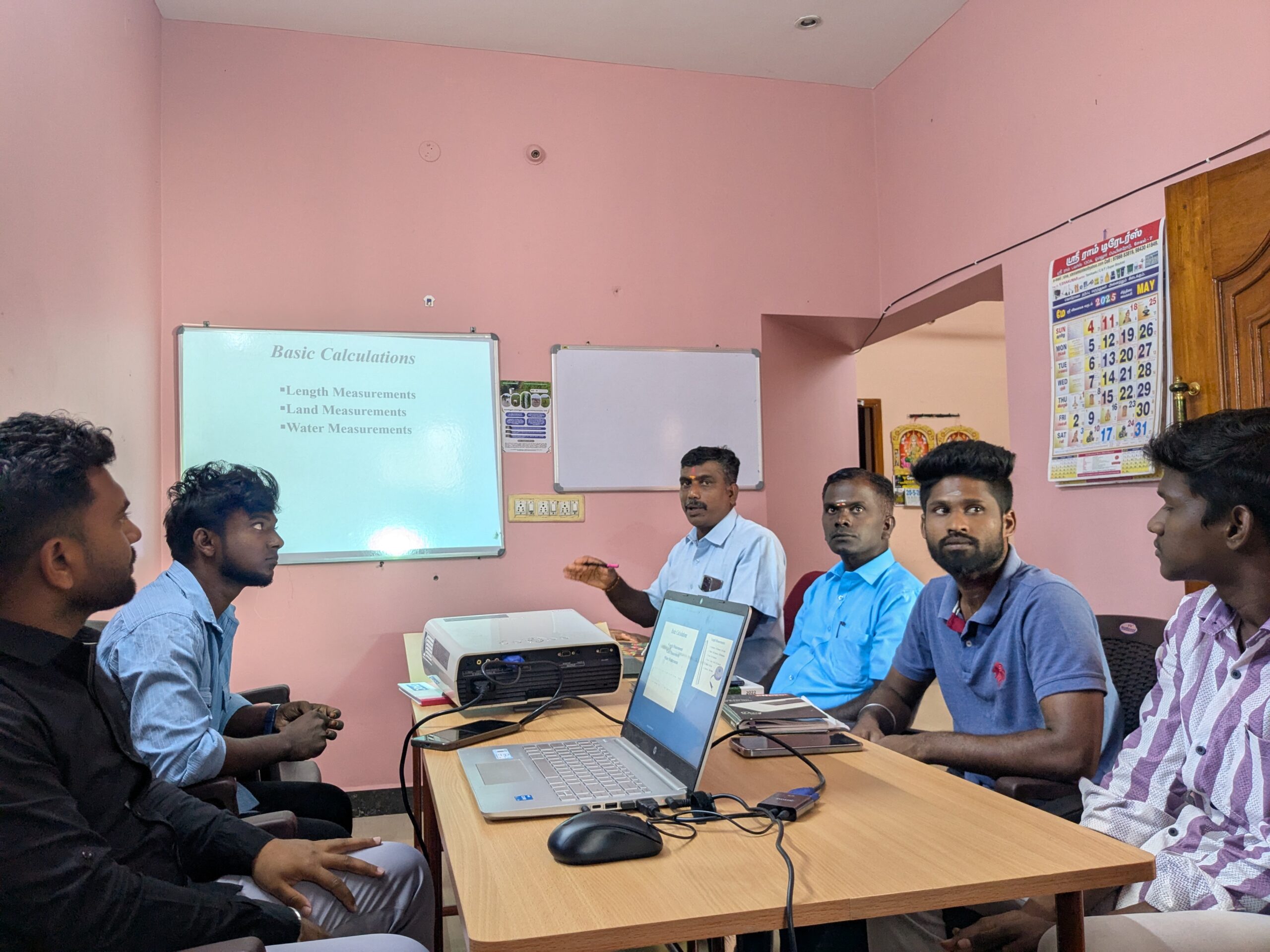
The team conducted a training with local community and CSO members on how to collect data and the value of this information for the project, in Theni district of Tamil Nadu. Photo credit: Anas KP
.
Importance of Being ‘Community-led’
The word ‘data’ can make a farmer or community resource person (CRP) feel disconnected from the intentions of researchers and scientists. But data is not just for scientists and statisticians to collect and analyse. It needs to be relevant and useful to the local stakeholders for an intervention to gain acceptance and lead to coordinated, bottom-up, and scalable action.
Here are our initial learnings from the implementation of the ongoing project:
- Community trust: There are three layers of trust that are essential to building a participatory project. The first layer is between respected community leaders (often embedded in NGOs) and the farmers. The second is between the community leaders and the non-governmental organisation (NGO). And the third is between the NGO and the donors and knowledge partners. Building these levels of trust helps solutions to be bottom-up and responsive to difficulties that farmers may be facing on their fields.
- Collective ownership of water risk and associated data: Community-led continuous monitoring integrates local stakeholders into the process. In Toopran, Telangana, farmers and community representatives helped us install high-quality sensors and digital tools, and continue to lend us a hand with data collection. They stay in touch with the local NGO and the scientists to understand what is happening to their land.

Locals from the village helped us fill the borewell recharge structure, where we installed a pressure transducer, with rocks in Toopran, Telangana. Photo credit: Vanya Mehta
.
- Youth employment: In Toopran, Telangana, a young farmer with 2.5 acres offered to help us collect data from the soil moisture sensors to supplement his income. With training, he now regularly sends us the data on WhatsApp, which helps us understand the impact of a range of interventions, like drip irrigation and pre-monsoon dry sowing, on soil moisture.
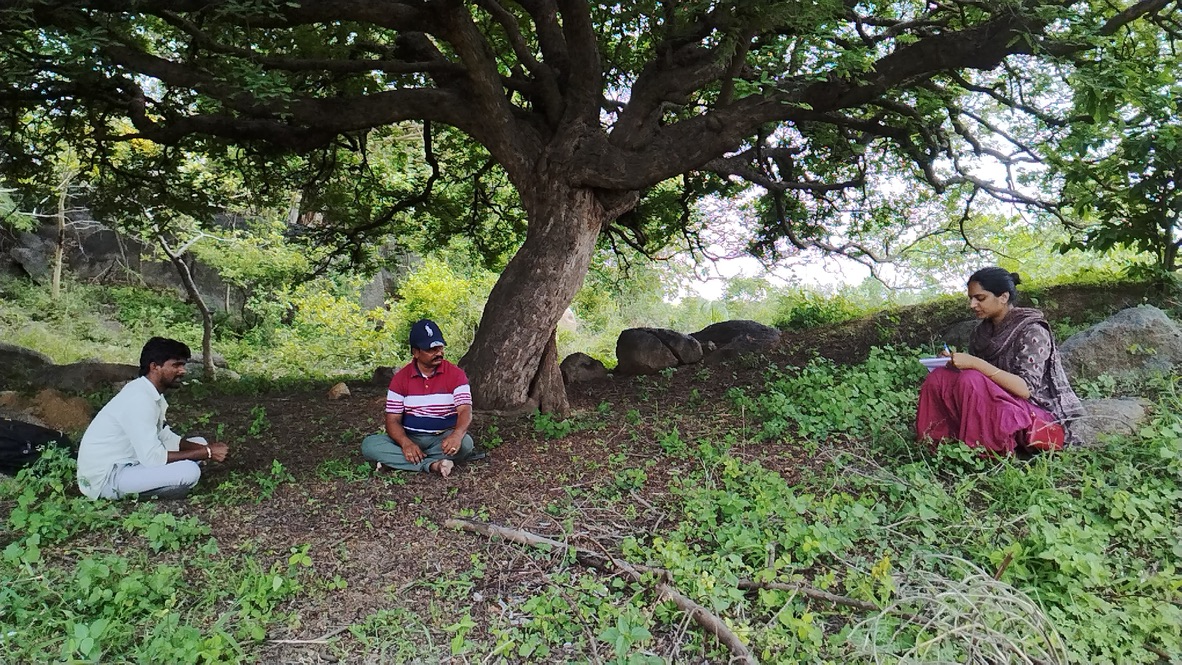
Ashok, a young farmer from Toopran, Telangana (left) is one of the community members collecting data for the project. He is speaking to a CRP from WASSAN, the local NGO, and a researcher from WELL Labs. Photo credit: Lakshminantha NR
.
Why Continuous Monitoring is Essential for Watershed Management
Rural India has no dearth of water-related challenges, and programmes and interventions seeking to address them. Despite substantial investments from the government and philanthropic initiatives, there is limited evidence on the effectiveness of these interventions.
The principle of ‘what gets measured, gets managed’ underscores the need for community-led continuous monitoring. This, in turn, helps track water security outcomes beyond traditional input-output metrics, making water systems sustainable and equitable.
Acknowledgements
This work is done in collaboration with the Environmental Defense Fund and Tata Consumer Products Limited.
The Technical Consulting programme at WELL Labs is conducting the research. Researchers include Ishita Jalan (Barabanki, Uttar Pradesh), Lakshmikantha NR (Toopran, Telangana), Clinton Fernandes (Vapi, Gujarat), Anas KP (Theni, Tamil Nadu), Vivek Singh Grewal, Vanya Mehta, Kriti Sharma. Gopal Penny, a senior scientist at EDF, worked with the WELL Labs team.
Authored by Vanya Mehta, Lakshmikantha N R (WELL Labs), Leah Beaulac (EDF)
Edited by Ananya Revanna (WELL Labs), Ronna Kelly (EDF)
If you would like to collaborate, write to us. We would love to hear from you.
Follow us and stay updated about our work:

